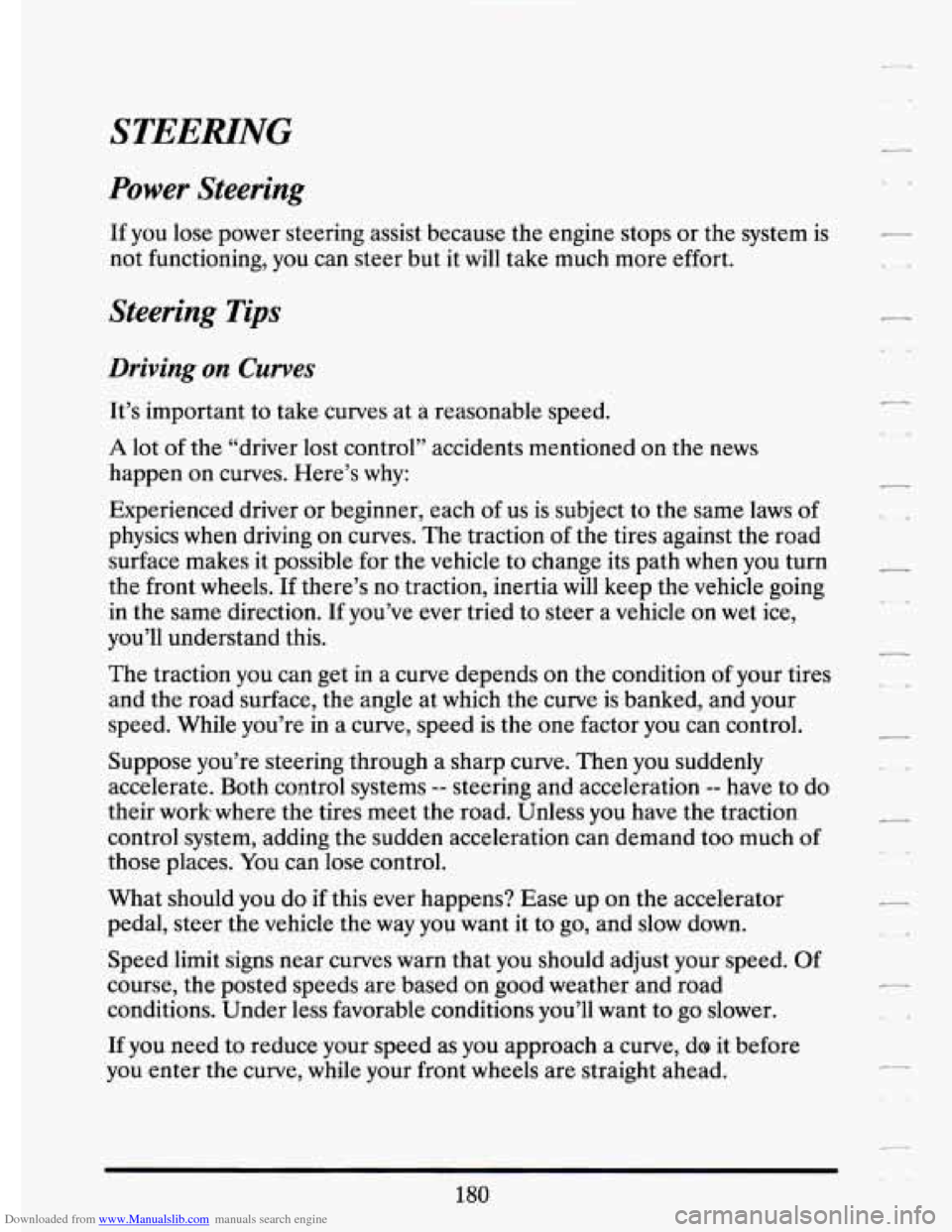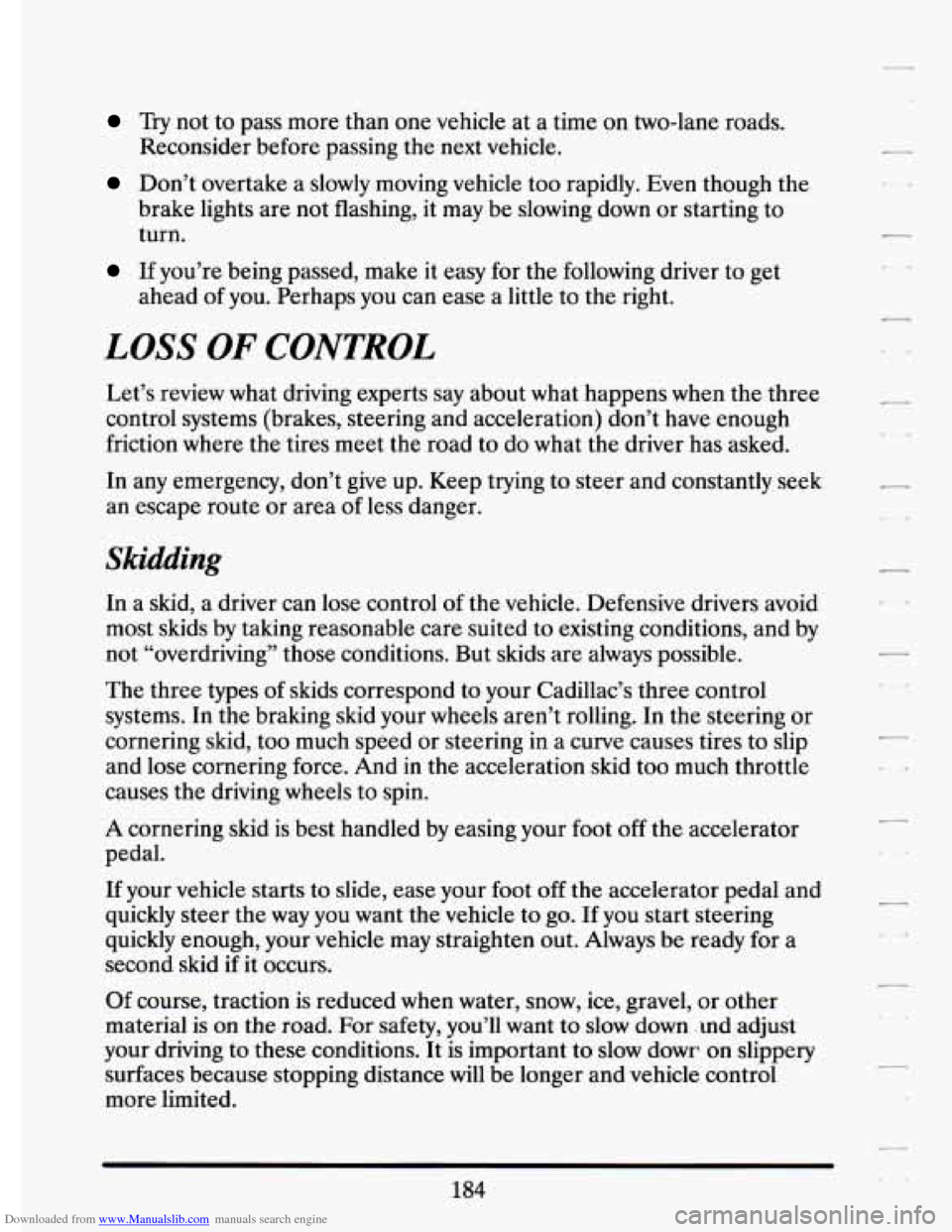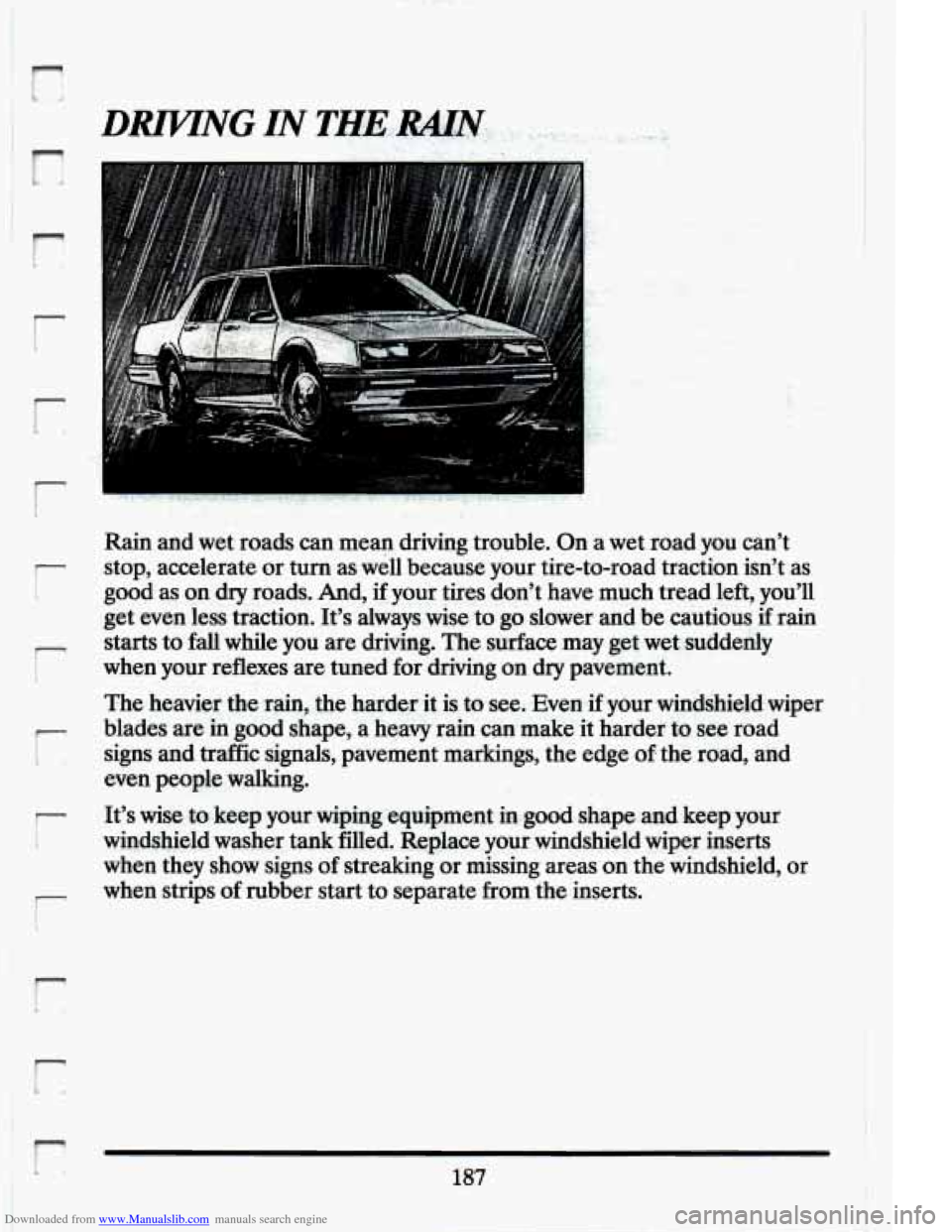Page 149 of 398
Downloaded from www.Manualslib.com manuals search engine I I
Tachometer - Analog Cluster
1
2
I
5/ 0
“1
This gage indicates the
engine speed in
Revolutions Per
Minute (RPM).
r I NOTICE:
Do not operate the engine with the tachometer in the red area,
-I
or engine damage may occur.
P Engine Speed Limiter
I This feature prevents the engine from operating at too many revolutions
per minute (RPM). When your engine RPM’s are critically high, the fuel
supply to the engine
is shut off. When the engine speed slows, the fuel
supply will come on again. This helps prevent damage to the engine.
I Whicle Speed Limiter (270 hp)
This feature prevents your vehicle from exceeding speeds that your tires
are not rated for. When this happens your engine’s fuel supply is shut
off.
- When the vehicle speed’s slows, the fuel will come on again. I I
137
Page 187 of 398
Downloaded from www.Manualslib.com manuals search engine P
You have three systems that make your vehicle go where youwant it to
go. They .are the brakes, the. steering and the accelerator. All three
systems haveto do. their work at the places where the tires meet the road.
~
,
,
~
Sometimes, as when you're driving on snow or ice, it's easy to-ask more of
those control systems thanthe tires and.road can provide. That. means
you can.lose control
of your vehide.. .
175
Page 192 of 398

Downloaded from www.Manualslib.com manuals search engine STEEMNG
Power Steering
L_
c-
If you lose power steering assist because the engine stops or the system is
not functioning, you can steer but it
will take much more effort.
Steering Tips
Driving on Curves
It’s important to take curves at a reasonable speed.
A lot of the “driver lost control” accidents mentioned on the news
happen on curves. Here’s why:
Experienced driver or beginner, each
of us is subject to the same laws of
physics when driving on curves. The traction of the tires against the road
surface makes it possible for the vehicle to change its path
when you turn
the front wheels. If there’s no traction, inertia will keep the vehicle going
in the same direction. If you’ve ever tried to steer a vehicle on wet ice,
you’ll understand this.
The traction you can get in a curve depends
on the condition of your tires
and the road surface, the angle at which the curve is banked, and your
speed. While you’re in a curve, speed is the one factor you can control.
Suppose you’re steering through a sharp curve. Then
you suddenly
accelerate. Both control systems
-- steering and acceleration -- have to do
their work where the tires meet the road. Unless you have the traction
control system, adding the sudden acceleration can demand too much
of
those places. You can lose control.
What should you do
if this ever happens? Ease up on the accelerator
Pedal, steer the vehicle the way you want it to go, and slow down.
31 ~ :d limit signs near curves warn that you should adjust your speed. Of
course, the posted speeds are based on good weather and road
conditions. Under less favorable conditions you’ll want to go slower.
If you need to reduce your speed as you approach a curve, do it before
you enter the curve, while your front wheels are straight ahead.
-
e.4
180
Page 196 of 398

Downloaded from www.Manualslib.com manuals search engine Try not to pass more than one vehicle at a time on two-lane roads.
Reconsider before passing the next vehicle.
Don’t overtake a slowly moving vehicle too rapidly. Even though the
brake lights are not flashing, it may be slowing down or starting to
turn.
If you’re being passed, make it easy for the following driver to get
ahead
of you. Perhaps you can ease a little to the right.
LOSS OF CONTROL
Let’s review what driving experts say about what happens whe\
n the three
control systems (brakes, steering and acceleration) don’t ha\
ve enough
friction where the tires meet the road to do what the driver has asked.
In any emergency, don’t give up. Keep trying to steer and constantly seek
an escape route or area of less danger.
Skidding
In a skid, a driver can lose control of the vehicle. Defensive drivers avoid
most skids by taking reasonable care suited to existing conditions, and by
not “overdriving” those conditions. But skids are always possible.
The three types of skids correspond
to your Cadillac’s three control
systems. In the braking skid your wheels aren’t rolling.
In the steering or
cornering skid, too much speed or steering
in a curve causes tires to slip
and lose cornering force. And in the acceleration skid too much throttle
causes the driving wheels to spin.
A cornering skid is best handled by easing your foot off the accelerator
pedal.
If your vehicle starts to slide, ease your foot off the accelerator pedal and
quickly steer the way you want the vehicle
to go. If you start steering
quickly enough, your vehicle may straighten out. Always be ready for a
second skid if it occurs.
Of course, traction is reduced
when water, snow, ice, gravel, or other
material is on the road. For safety, you’ll want
to slow down .md adjust
your driving
to these conditions. It is important to slow dowr on slippery
surfaces because stopping distance will be longer and vehicle control
more limited.
184
Page 197 of 398
Downloaded from www.Manualslib.com manuals search engine i"
r
I
i
r
r
r
i
L
r
r
I
While driving on a surface with redueed tractio.n, try your. best to avoid
sudden steering, acceleration, or braking (hciuding engine braking by
shifting to a lower gear). Any sudden changes could cause
the tires to
slide.
You may not realize the surface is slippery until your vehicle is
skidding. Learn to recognize warning clues
-- such as enough water, ice or
packed snow on the road to make a "mirrored surface"
-- and slow down
when you have any doubt.
Remember: Any anti-lock braking system
(ABS) helps avoid only the
braking skid.
DMNG ATNIGHT
Night driving is more dangerous than day driving. One reason is that
some drivers are likely to be impaired
-- by alcohol or drugs, with night
vision problems, or by fatigue.
Here are some tips on night driving.
Drive defensively.
0 Don't drink and drive.
0 Adjust your inside reamew mirror to reduce the glare from headlights
behind you.
r
185
Page 199 of 398

Downloaded from www.Manualslib.com manuals search engine r
i
r
r
r
I
I
Rain and wet roads can mean driving trouble. On a wet road you can’t
stop, accelerate or turn as well because your tire-to-road traction isn’t .as
good as on dry roads. And,
if your tires don’t have much tread left, you’ll
get even less traction. It’s always wise to go slower and be cautious
if rain
starts to fall while you are driving. The surface may get wet suddenly
when your reflexes are tuned for driving on dry pavement.
The heavier the rain, the ha&r it is to see. ,Even if your windshield. wiper
blades are ‘in good shape, a heavy rain can make it harder to see road
signs and traffic signals, pavement markings, the edge
of the road, and
even people walking.
It’s
wise to. keep yourwiping -equipment,in.good shape ,and keep your
windshield washer tank filled. Replace your windshield wiper inserts
when they show signs
of streaking or missing areas on the windshield, or
when strips of rubber start
to separate from the inserts.
Page 201 of 398
Downloaded from www.Manualslib.com manuals search engine n
P
r I 1.
r
L
P
t-
li
0 Have.good tires with proper tread depth. (See “Tires” in the Index.)
v I
.- .
r] X89
Page 205 of 398

Downloaded from www.Manualslib.com manuals search engine n
r !
1- ,
r I
ii
P
I
- i
r
E‘
0 LiEhts: Are they all working? Are the lenses clean?
0 Tires: They are vitally important to a safe, trouble-free trip. Is the
tread good enough for long-distance driving? Are the tires all inflated
I
to the recommended pressure? 1 I
0 Weather Forecasts: What’s the weather outlook along your route?
Shodd you delay your trip a
short time to avoid a major storm
system?
0 Maps; Do you have up-to-date maps?
HIGHFKAYHWNOSIS
Is there actually such a condition as “highway hypnosis”? Or is it just
plain falling asleep at the wheel? Call it.highway hypnosis; lack
of
awareness, or whatever.
There
is something about an easy stretch of road with the same scenery,
along with the
hum of the tires on the road, the drone of the engine, and
the rush
of the wind against the vehicle. that can make you sleepy. Don’t
let it happen to you!
If it does, your vehicle can leave the road in less than
a second, and you could crash and be injured.
What can you do about highway hypnosis? First,
be aware that it can
happen.
Then here are some tips:
0 Make sure your vehicle is well ventilated, with a comfortably cool
interior.
0 Keep your eyes moving. Scan the road ahead and to the sides. Check
If you get sleepy, pull off the road into a rest, service., or parking area
your rearview
mirrors and
your instruments frequently.
and take a nap, get some exercise, or both. For safety, treat drowsiness
on the highway as an emergency.
i
193